Let's appreciate the lesser-known prairie grass, Gama Grass.
Gama Grass, Tripsacum dactyloides, is a warm-season, robust bunchgrass that grows in open grassland areas. It can be found in prairies, as well as growing along the roadside. It is found in west-central and southern Illinois. Gama Grass can grow 5 to 7 feet tall, and an individual bunch can be several feet wide.
Growth habit
One of the most unique identification characteristics for this grass comes later in the growing season. Rather than the leaf blades and stems continuing to grow in a tight bunch (left , the grass will start growing in a way that makes it look like someone came and sat down in the middle of the bunch, pushing the tall blades of grass and stems out to the sides. This growth habit is very distinctive for this grass.
Leaves
The large leaves easily surpass a foot in length and have a prominent thick white midrib. The leaf blades are very sharp, so be careful when handling this grass. The leaves tend to wrap around and clasp the stems. When you pull a leaf blade back from the stem to find the ligule (which is easier said than done with this grass since the foliage is very thick), you’ll find a ligule made up of short, bristly hairs.
Turkey foot-shaped inflorescence
By far the most recognizable part of this grass is the inflorescence.
- The inflorescence is a raceme, made up of three or more finger-like collections of spikelets, which range from 4 to 10 inches long.
- This grass is monoecious, which means it has separate male and female flowers, but they are on the same plant.
- The female flowers are found at the base of the raceme, and when in flower you can see their stigmas sticking out, looking like red fuzzy tentacles.
- The male flowers can be found on the upper ¾ of the raceme, and when in flower, you can see the orange to brown anthers.
Need a refresher on grass identification terms, like ligule and spikelet? Check out this blog post!
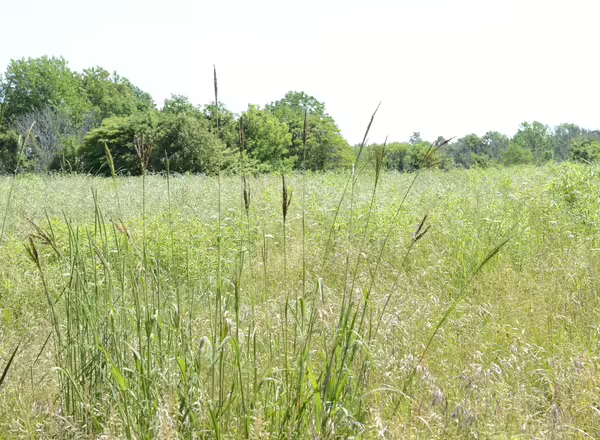
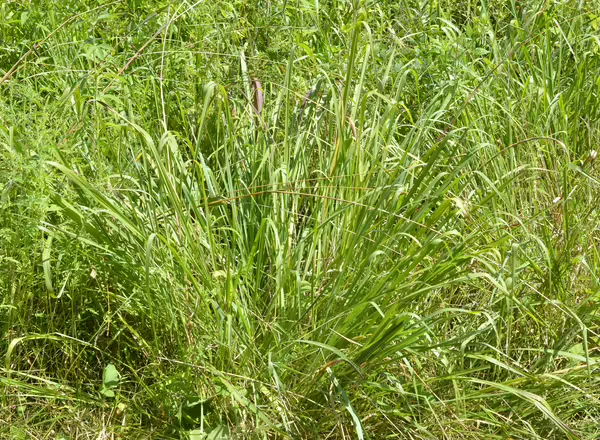
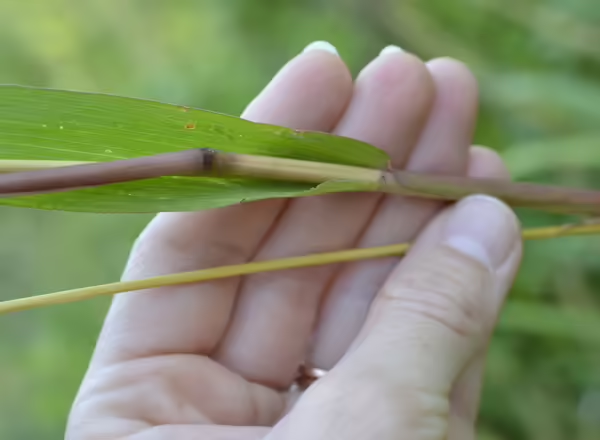
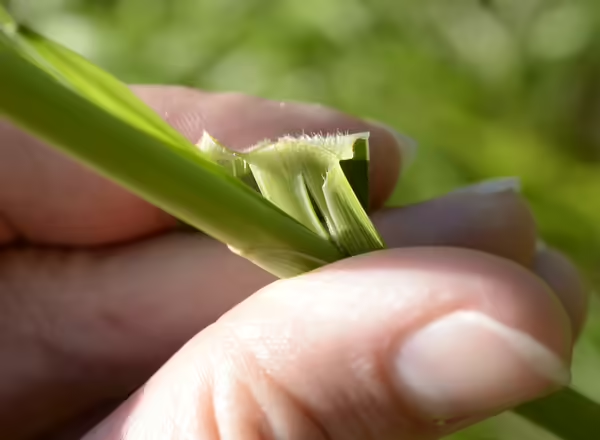
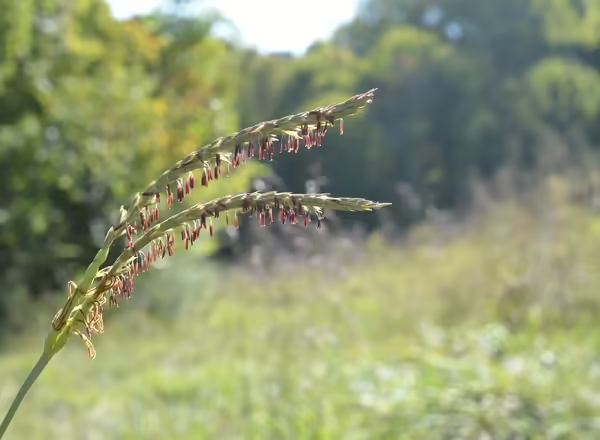
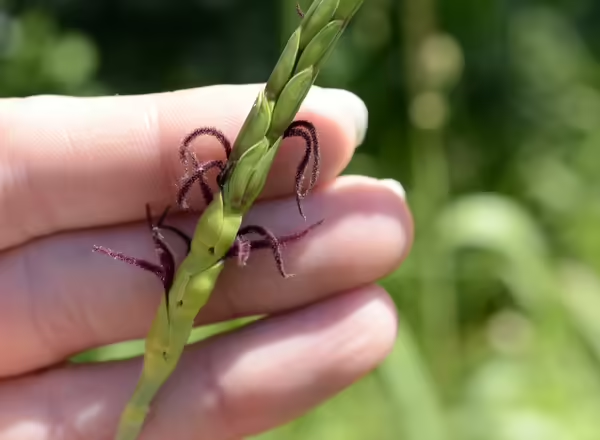
Gama Grass, Tripsacum dactyloides, is a native, warm season grass mostly found in the southern half of Illinois. It is a robust bunchgrass that grows in moist prairies, and this grass produces large bunches with flowering stalks that can grow up to seven feet tall. The leaves of...